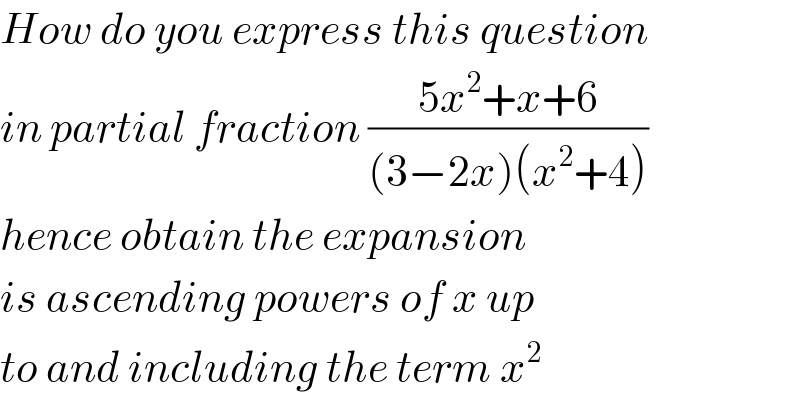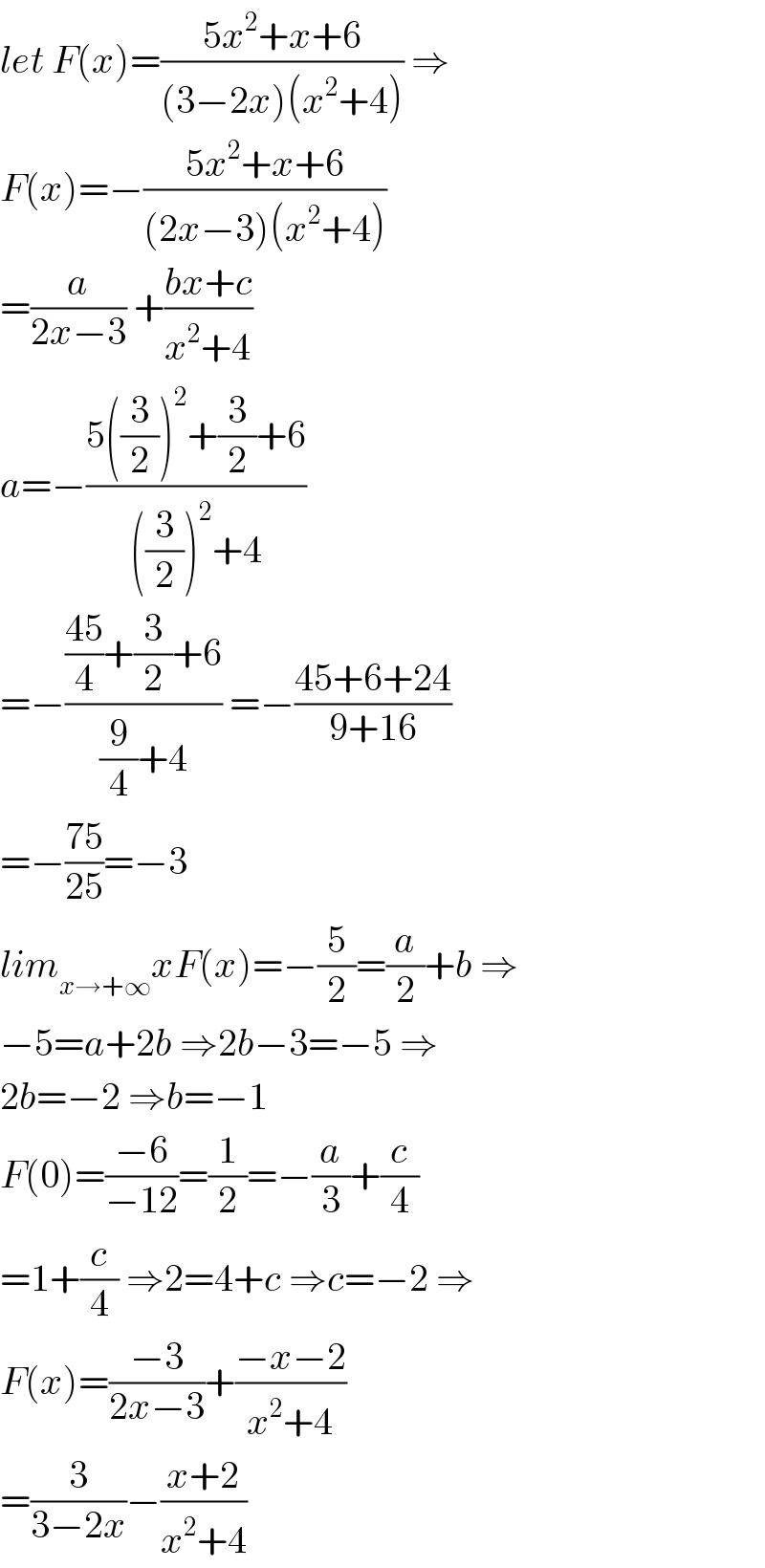
Question and Answers Forum
Previous in Relation and Functions Next in Relation and Functions
Question Number 118381 by bramlexs22 last updated on 17/Oct/20

Commented by bramlexs22 last updated on 17/Oct/20

Answered by benjo_mathlover last updated on 17/Oct/20
![Partial fraction ((5x^2 +x+6)/((3−2x)(x^2 +4))) let ((5x^2 +x+6)/((3−2x)(x^2 +4))) = (p/(3−2x)) + ((h(x))/(x^2 +4)) Then p = [ ((5x^2 +x+6)/(x^2 +4)) ]_(x=(3/2)) = ((5((3/2))^2 +(3/2)+6)/(((3/2))^2 +4)) = 3 Hence ((5x^2 +x+6)/((3−2x)(x^2 +4))) = (3/(3−2x)) + ((h(x))/(x^2 +4)) = ((3(x^2 +4)+(3−2x)h(x))/((3−2x)(x^2 +4))) h(x) = ((2x^2 +x−6)/(3−2x)) = −x−2 ∴ ((5x^2 +x+6)/((3−2x)(x^2 +4))) = (3/(3−2x)) − ((x+2)/(x^2 +4))](Q118385.png)
Commented by Bird last updated on 17/Oct/20

Answered by 1549442205PVT last updated on 17/Oct/20

Commented by benjo_mathlover last updated on 17/Oct/20

Commented by 1549442205PVT last updated on 17/Oct/20

Answered by Bird last updated on 17/Oct/20

